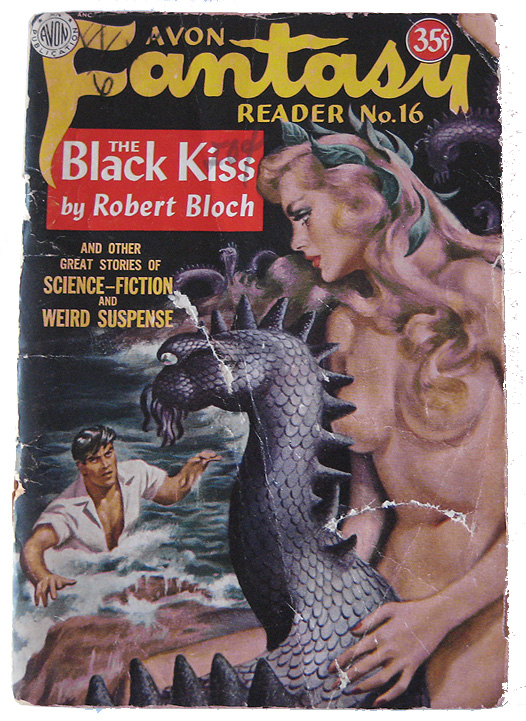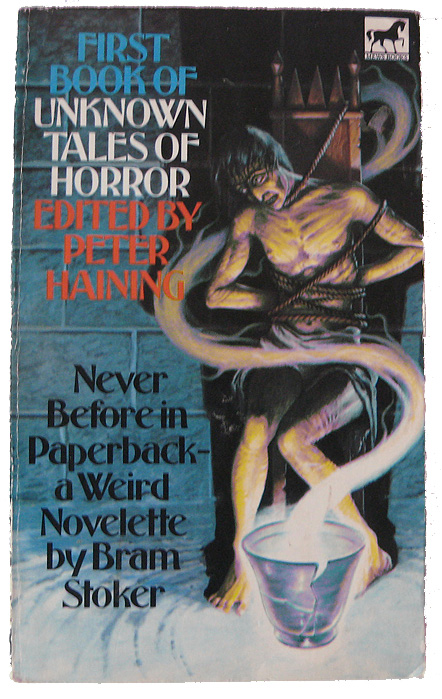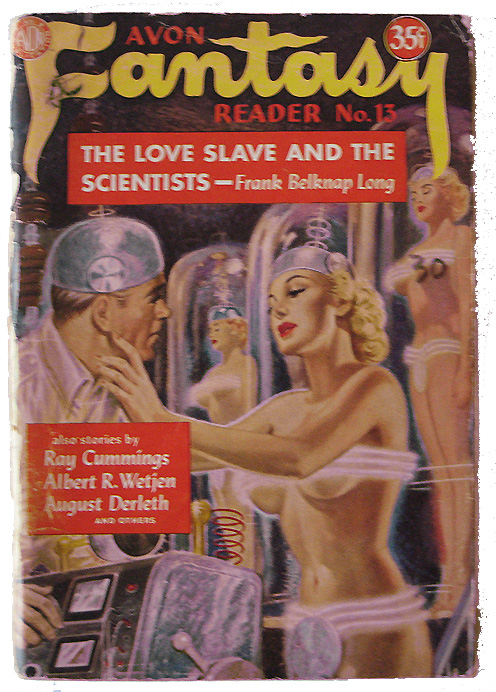|
Australian
Gothic: An Anthology of Australian Supernatural Fiction
1867-1939, edited by James
Doig (Equilibrium Books, 2007)
Australian
Nightmares: More Australian Tales of Terror and the
Supernatural , edited by James Doig (Equilibrium
Books, 2008)
These
two anthologies represent years of work and a Holmes-like
dedication to the pursuit of minutia in ferretting out
information and sourcing references. The resulting books
are undoubtedly of historic importance in understanding
the nature and extent of supernatural horror fiction
in Australia.
Hitherto,
in terms of existing accounts of the country's literary
past, you would be forgiven for thinking that the supernatural/horror
genre played little part in it, aside from the occasional
reference to stories of a more gothic nature from respected
figures such as Henry Lawson and Marcus Clarke. As Doig
points in his introduction to Australian Gothic,
no Australian stories appear in any of the international
anthologies that claim to represent the best supernatural
stories of the period -- the second half of the 19th
century and the early 20th being regarded as a "Golden
Age" of supernatural fiction. "The fact is,"
he writes, "that Australian supernatural fiction
has been poorly served by anthologists, researchers
and academics."
A
reason for the neglect is, he explains, "the sheer
rarilty of many of the collections and periodicals"
in which Australian supernatural stories appeared, most
of which simply haven't been accessible outside of library
archives. Doig seeks to rectify this neglect by making
a wealth of tales available in his books -- and what
he reveals is in fact a flourishing subculture of gothic
and supernatural fiction in Australia during this period,
with writers more than willing to feed the growing public
taste, even though -- for various reasons which he articulates
-- that taste grew more slowly in Australia than elsewhere.
But
it is not simply historical curiosity that is satisfied
by Doig's anthologies. The stories he includes prove
to be entertaining and often powerul reading, many displaying
a dark sensibility that is as potent now as it must
have been then. I found them both surprising and rarely
"dated", at least not in the sense that they
have lost their ability to engage the imagination. Many
pack as strong an imaginative punch as the contents
of more contemporary anthologies.
I
asked Doig a variety of questions about his achievement.
[Note: the covers scattered through the article below
represent some of the sources in which the stories were
published.]
 Why
he undertook the project Why
he undertook the project
Early
Australian supernatural fiction is very much an untouched
area. People like Van Ikin and Graham Stone have done
an exhaustive job finding and getting into print early
Australian science fiction, but vintage Australian supernatural
fiction and fantasy haven't attracted much attention
at all. That's strange because in the UK and US this
is a big industry –-- over the years there have
been lots of small press publishers specialising in
reprinting forgotten or long-out-of-print writers of
supernatural fiction. It's a field that has also attracted
talented research anthologists –-- people like
Hugh Lamb, Richard Dalby, Sam Moskowitz, Jack Adrian
and Mike Ashley. They've been foraging through old collections
and periodicals for over 30 years. The thing is that
the best supernatural horror fiction doesn't date --
the ghost stories of Charles Dickens, Henry James and
M.R. James are just as effective today as they were
in their own time. The same can't be said of early science
fiction, which in most cases has dated terribly.
But
Australian supernatural fiction hasn't attracted the
same interest with researchers -- perhaps there just
isn't the readership here. Overseas it seems there has
always been a significant number of hard-core fans that
will buy up the limited editions the small presses produce,
or the odd anthology of Victorian ghost stories. Penguin
books recently published a great retrospective anthology
of American supernatural fiction edited by S.T. Joshi,
but similar ventures in Australia have failed to find
a mainstream publisher. That's a shame.
At
least this neglect has meant I've been able to do something
useful. And it neatly combines a love of supernatural
fiction, book collecting, and literary research. It
something I like doing and will continue to do.
 How
he found the stories How
he found the stories
I've
been a fan and collector of horror stories for a long
time -- since I was a kid -- so some of the stories
I had on my shelves. I've also got a decent collection
of reference books -- Everett Bleiler's checklists and
guides, George Locke's bibliographies and Spectrum
of Fantasy series, Donald Tuck's Encyclopedia
of Fantasy and Science Fiction, and so on. The
National Library isn't far away, so I spent many hours
there ordering books and periodicals -- the newspaper
room has hundreds of microfilmed periodicals and magazines,
which is probably the richest source of forgotten supernatural
fiction. I've barely scratched the surface there. Also,
I've got a few contacts here and overseas -- fans and
researchers -- who send me stories or steer me towards
a certain author.
Perseverance
certainly pays off. For instance, for a long time now
I've been interested in a 1930s English thriller writer
named R.R. Ryan. Ryan wrote seven thrillers published
by Herbert Jenkins with names like Death or Sadist
and Freak Museum, but because they are so rare
only a few collectors knew about them. In the 1980s
Karl Edward Wagner raised the profile of R.R. Ryan's
books by including three of them in the three lists
of favourite horror novels that he compiled for T.E.D.
Klein's Twilight Zone Magazine. However, no
one knew who R.R. Ryan was -- there was no biographical
information at all. Most people, including Wagner and
Ramsey Campbell, believed Ryan was a woman because the
British Library catalogue expanded the name to Rachel
R. Ryan. Then in 2004 I tracked the Herbert Jenkins
contract ledger to Random House in London. Herbert Jenkins
had become Barrie and Jenkins in the 1970s, which in
turn had been acquired by Random House. I corresponded
with the Random House librarian, who revealed that the
contract ledgers included the R.R. Ryan books, and four
other novels written by R.R. Ryan under the pseudonyms
"Cameron Carr" and "John Galton'. While
that was intriguing, I really wanted to establish R.R.
Ryan's identity, but Random House refused to release
the addresses in the contracts for privacy reasons,
even though R.R. Ryan's last book was published in 1940!
Anyway, finally earlier this year, four years on, Random
House released the addresses –-- there were two
addresses in Hove, Sussex -- and through the electoral
rolls at the Sussex Records Office I learned that R.R.
Ryan was in fact a man named Rex Ryan, which was in
turn a pseudonym used by a certain Evelyn Bradley, a
theatrical manager who committed suicide in 1950.
That
was interesting enough, but after I published these
findings I received an email by no less than R.R. Ryan's
grandson! As it happens, there is yet another R.R. Ryan
book that was published under a pseudonym in the 1920s,
and perhaps more intriguingly, R.R. Ryan's daughter
wrote four thrillers under a pseudonym in the 1940s.
It also seems that R.R. Ryan as Evelyn Bradley wrote
a number of plays with names like Mad Doctor,
Unwanted Child, Volga Boatman, and
The Mandarin Wong Koo. Anyway, these latest
findings are published in the small press supernatural
fiction journal All Hallows. This type of research
is great fun and can lead you down all sorts of unexpected
paths.
 The
Value of the Exercise The
Value of the Exercise
Hopefully
it will be seen as opening up a neglected area of Australia's
literary heritage. There have been a few attempts to
do this in the past, most recently Ken Gelder and Rachael
Weaver's Anthology of Australian Gothic Fiction;
however I've mainly gone for the really obscure stuff
by authors who are largely forgotten -- not many people
have heard of the likes of Lionel Sparrow, James Edmund,
Frances Faucett and Dulcie Deamer, to name a few.
But
more than any extrinsic value, this sort of literary
research and detective work is something I really like
doing -- it combines a lot of things I'm interested
in: literary research, supernatural fiction, collecting
books and magazines. Certainly, the only rewards are
the satisfaction you get from finding something of interest,
and the occasional positive review and interviews like
this There's no money in it, and it seems no mainstream
publisher would touch this stuff with a barge pole,
which is a shame. I look back to the heady days of the
1970s with nostalgia when all sorts of publishers where
bringing out anthologies by the likes of Hugh Lamb,
Peter Haining, Michael Parry and lots of others.
The
nature/themes/subject matter of the early horror stories
I
tossed my net pretty widely, so the settings, themes
and subject matter are varied. I didn't choose only
stories set in Australia -- some of the stories are
set in Asia and the Pacific, a few are set in Europe,
some in the distant past. Most of the stories are set
in Australia, and there are themes and subjects that
crop up fairly often. One of these is the "child
lost in the bush" -- this is quite a popular theme
in early Australian fiction, and there have been a few
studies of it. Of course, it symbolises the fears of
European settlers blundering into a huge country that
overwhelms them; they were like babes in the woods.
Other themes draw on the strange fauna and flora that
the settlers found -- stories like Ernest Favenc's "Haunt
of the Jinkarras" and James Edmund's "The
Prophetic Horror of the Great Experiment" --� draw
on this curiosity in evolutionary and natural oddities.
A number of the stories are set during the lawless gold
rush -- greed, envy and hate lead to murder, which results
in supernatural revenge -- the classic supernatural
horror tale, common in all times and places.
The
stories set in the Asia and the Pacific are particularly
interesting. People like Beatrice Grimshaw and James
Francis Dwyer made their careers from writing about
their experiences there. Both of these authors should
be better known and both brilliantly evoke the atmosphere
and spirit of Asia and the Pacific islands and the strange
things you can encounter there.
 The
"significant" authors/stories The
"significant" authors/stories
A
few authors crop up more than once in Australian
Gothic and Australian Nightmares. Ernest
Favenc has three stories in AG and two stories
in AN. I think he is an important Australian
horror writer -- certainly the most important of the
early period -- and I'm hoping to put together a collection
of his stories. In some ways he represents the bridge
between clumsy early colonial fiction and modern fiction,
in the same way that M.R. James heralds the modern supernatural
tale in England and H.P. Lovecraft in the US.
Lionel
Sparrow is interesting as a completely forgotten Australian
writer of horror stories who wrote about a dozen bizarre
and excessive gothic horror tales -- like Favenc, he
probably deserved to be resurrected in a single collection.
Others who wrote quite extensively in the field and
should be better known are Rosa Praed (whose collection
Stubble Before the Wind contains several ghost
stories and is incredibly rare), Mary Fortune (one of
the first female detective story writers in the world),
and Helen Simpson (a well-known and important Australian
writer who died young, and whose collection The
Baseless Fabric contains several supernatural stories).
The
"history" of early Australian horror/weird
fiction in general
The
history of early Australian horror fiction, like its
counterparts in the UK and US, is tied up with the history
of the popular magazines and periodicals that flourished
from about the last quarter of the nineteenth century.
In Australia, the main magazine outlets where The
Bulletin, Lone Hand, and the Australian
Journal. Ernest Favenc, Lionel Sparrow, James Edmund,
and Mary Fortune all wrote prolifically for these periodicals.
Others like James Francis Dwyer and Louis Becke began
their careers writing for the likes of the Bulletin.
The rise of the pulps in the 1920s and 1930s provided
another paying outlet, and Beatrice Grimshaw and James
Francis Dwyer published dozens of stories in the Blue
Book, a very popular adventure pulp. The pulps
also influenced Australian writers -- it appears that
Weird Tales influenced the young Rosaleen Norton
to write three supernatural horror stories for Smith's
Weekly in the 1930s. She went on to become the
notorious "Witch of King's Cross"� and an
influential and occasionally banned artist.
I
must say that while there is an obvious historical/period
quality to many of the stories, in some of them there
is also a very modern "feel" -- in the sensibilities
involved and even the stylistic elements. Any thoughts
on that?
Yes,
some of the stories have a modern style or sensibility.
I'm thinking particularly of Ernest Favenc, Beatrice
Grimshaw and James Francis Dwyer -- I think these three
in particular would have been quite at home writing
for any of the current professional horror/speculative
magazines like Cemetery Dance, Weird Tales,
Interzone and so on. I think the point is that
they were talented, professional writers and were well
received during their lifetimes, but have since been
forgotten. The depressing thing is that many of the
writers included in AG and AN died
forgotten and penniless. There's a file on Beatrice
Grimshaw in the National Archives of Australia, part
of the Commonwealth Literary Fund series. The records
show that she was sick with diabetes and destitute.
Evidently she was buried in a pauper's grave.
Buy
Australian
Gothic and Australian
Nightmares
|